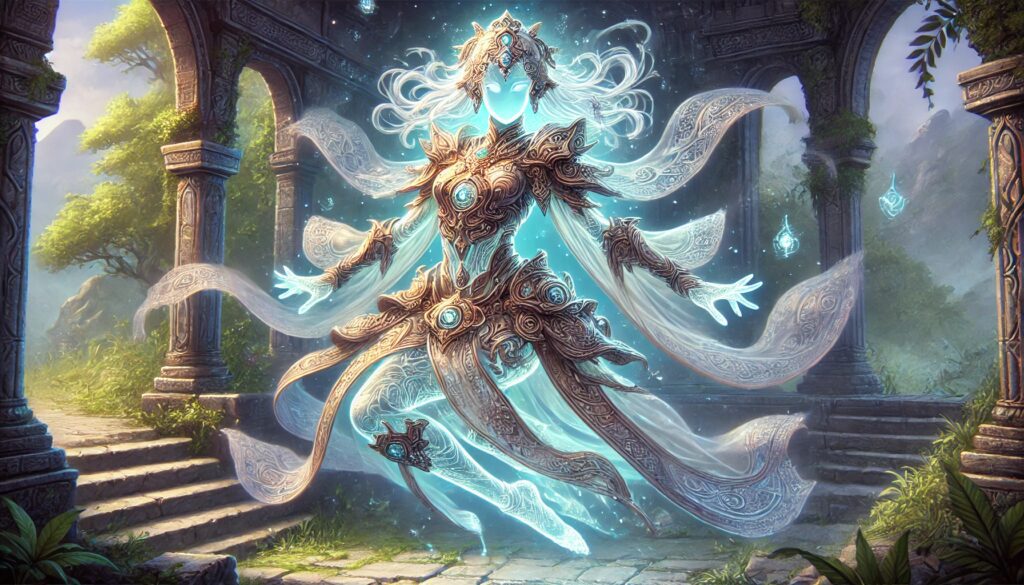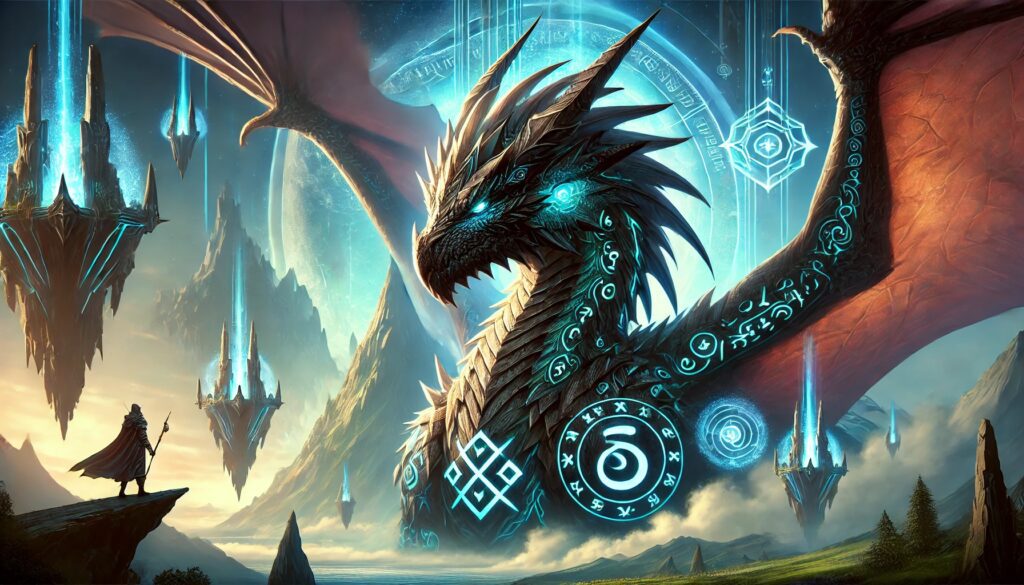
Creating an AI-driven game character can transform your gaming experience. Let’s delve deeper into the exciting world of intelligent characters and explore how they can enhance gameplay.
The Evolution of Game Characters
Game characters have come a long way from the simple, pixelated figures of the past. Today, characters are complex, lifelike, and capable of interacting with players in ways that were unimaginable just a few years ago. This evolution is driven by artificial intelligence (AI), which has opened new possibilities in character design and interaction.
What is an AI-Driven Game Character?
An AI-driven game character is more than just a programmed entity. It’s a character that can learn, adapt, and respond to player actions in real-time. These characters use advanced algorithms and machine learning to make decisions, creating a more immersive and dynamic gaming experience.
Key Features of AI-Driven Characters
Adaptive Learning
One of the most exciting features of AI-driven characters is their ability to learn from player behavior. For instance, if you tend to take a stealthy approach in a game, the AI character can adapt to support this style, perhaps by providing cover or distracting enemies. This adaptive learning can be implemented through various techniques such as reinforcement learning, where the AI character gets feedback from the game environment to improve its actions over time.
Real-Time Decision Making
AI-driven characters can make decisions on the fly. They assess the game environment, predict potential threats, and take appropriate actions without pre-set scripts. This leads to more unpredictable and engaging gameplay. Techniques like neural networks and decision trees are often used to enable real-time decision-making, ensuring the character can handle a wide range of scenarios.
Emotional Intelligence
Some advanced AI characters are equipped with emotional intelligence. They can recognize and respond to the player’s emotions. For example, if you’re frustrated, the character might offer encouragement or adjust the game difficulty to improve your experience. This involves complex natural language processing (NLP) and sentiment analysis algorithms that can interpret and respond to the emotional tone of player inputs.
Benefits of AI-Driven Characters
Enhanced Immersion
The primary benefit of AI-driven characters is the level of immersion they bring to the game. Players can interact with these characters in a more meaningful way, making the game world feel alive and responsive. Immersion is crucial for virtual reality (VR) games, where the sense of presence is key to a compelling experience.
Personalized Gameplay
AI-driven characters contribute to a more personalized gameplay experience. They remember your choices and preferences, tailoring their interactions to suit your style. This makes each gaming session unique. Games like The Elder Scrolls and Fallout series have started incorporating elements of personalized gameplay, but AI-driven characters take this to a whole new level.
Dynamic Storytelling
With AI-driven characters, the story can evolve based on your decisions. This creates a dynamic narrative that changes with each playthrough, offering endless replayability and deeper engagement. This is often achieved through procedural generation and branching storylines, allowing for a virtually infinite number of story possibilities.
Real-World Example: Red Dead Redemption 2’s NPCs
One of the best real-world examples of AI-driven game characters is found in Red Dead Redemption 2 by Rockstar Games. The game’s non-playable characters (NPCs) showcase advanced AI capabilities, setting a new standard for interactive environments.
Adaptive Behavior
In Red Dead Redemption 2, NPCs exhibit adaptive behavior based on the player’s actions. If the player engages in criminal activities, NPCs will become wary or hostile. Conversely, if the player helps people, NPCs respond with gratitude and might even offer assistance later in the game.
Real-Time Interactions
The game’s NPCs also feature real-time decision-making. They can react to the player’s presence, engage in conversations, and even remember past interactions. For example, if you save a character from a dangerous situation, they might acknowledge you the next time you meet, adding a layer of continuity and realism.
Emotional Responses
Red Dead Redemption 2‘s NPCs display a range of emotional responses. They can express fear, joy, anger, and sadness, depending on the situation. This emotional intelligence makes interactions more engaging and adds depth to the game’s world.

Creative Ideas for Crafting an AI-Driven Game Character
1. Shape-Shifting Sidekick
Create a shape-shifting sidekick that can adapt its form based on the player’s needs. This character could transform into different animals or objects to help solve puzzles, fight enemies, or sneak past guards. Its AI could learn the player’s preferences and habits, choosing the best form to assist in various situations.
2. Time-Traveler Mentor
Design a time-traveler mentor who guides the player through different eras. This character could provide historical context, help with era-specific challenges, and even alter the timeline based on the player’s decisions. The mentor’s AI could adapt to the player’s learning style, offering more detailed explanations or simplified advice depending on the player’s preferences.
3. Emotionally Bonded Companion
Develop an emotionally bonded companion whose behavior and abilities evolve based on the player’s interactions. This character could start as a simple pet or friend and grow into a powerful ally or confidant. The AI could track the player’s emotional state and adapt its behavior to provide comfort, encouragement, or a challenge when needed.
4. Interactive Villain
Introduce an interactive villain who can adapt their strategies based on the player’s actions. This antagonist could taunt the player, lay traps, and devise new plans to thwart progress. The AI could learn from the player’s tactics, ensuring that each encounter is unique and challenging.
5. Dynamic Team Leader
Create a dynamic team leader who can manage a squad of NPCs in real-time. This character could issue commands, adapt strategies, and provide feedback based on the player’s performance. The AI could monitor the team’s status and make adjustments to ensure optimal performance and player engagement.
6. Customizable Avatar
Design a customizable avatar that changes its appearance, abilities, and personality based on the player’s choices. This character could start with a blank slate and gradually develop unique traits and skills as the player progresses. The AI could analyze the player’s decisions and gameplay style to create a personalized experience.
7. Mystical Guide
Introduce a mystical guide who offers cryptic advice and magical assistance. This character could provide hints, cast spells, and unlock hidden areas based on the player’s progress and actions. The AI could adapt its guidance to the player’s level of skill and exploration style, ensuring that the help is always relevant and engaging.
8. Sentient Environment
Create a sentient environment where the game world itself is an AI-driven character. This environment could react to the player’s actions by changing weather, terrain, and wildlife behavior. The AI could adapt the world’s challenges and resources to match the player’s progress, making the entire game world feel alive and responsive.
Step-by-Step Guide to Creating an AI-Driven Game Character
Step 1: Define Character Traits and Behavior
Begin by defining the character’s traits and behaviors. What kind of personality does the character have? How should they react to different player actions? This step involves creating a detailed character profile.
- Character Profile: Outline the character’s background, personality traits, strengths, and weaknesses.
- Behavior Mapping: Define how the character should behave in various scenarios. For example, how do they react to threats, allies, or changes in the environment?
Step 2: Choose the Right AI Techniques
Select the AI techniques that best suit your character’s needs. Common techniques include:
- Reinforcement Learning: For characters that need to adapt and learn from player interactions.
- Neural Networks: For complex decision-making processes.
- Decision Trees: For structured and hierarchical decision-making.
Step 3: Develop the Learning Algorithm
Create a learning algorithm that allows your character to adapt and improve over time. This involves:
- Data Collection: Gather data on player interactions to inform the learning process.
- Algorithm Design: Develop an algorithm that can process this data and improve the character’s behavior.
- Training: Train the algorithm using historical data and simulated scenarios.
Step 4: Implement Real-Time Decision Making
Integrate real-time decision-making capabilities into your character. This requires:
- Environment Analysis: Program the character to analyze the game environment continuously.
- Predictive Modeling: Use predictive models to anticipate player actions and make appropriate decisions.
- Action Selection: Ensure the character can choose the best action based on current circumstances.
Step 5: Add Emotional Intelligence
Enhance your character with emotional intelligence by:
- Sentiment Analysis: Implement sentiment analysis to interpret player emotions based on their actions and inputs.
- Emotional Responses: Program the character to respond emotionally, offering support, encouragement, or adjusting difficulty as needed.
- Interaction History: Maintain a history of interactions to inform future emotional responses.
Step 6: Test and Iterate
Testing is crucial to ensure your AI-driven character works as intended. This involves:
- Playtesting: Conduct extensive playtesting with a diverse group of players to gather feedback.
- Bug Fixing: Identify and fix any issues or bugs that arise during testing.
- Iteration: Continuously improve the character based on player feedback and new insights.
Step 7: Optimize for Performance
Finally, optimize your character’s performance to ensure smooth gameplay. This includes:
- Resource Management: Ensure the character’s AI processes do not consume excessive resources, causing lag or crashes.
- Efficiency Improvements: Streamline algorithms and code to enhance efficiency.
- Scalability: Ensure the character can handle a wide range of player actions and game scenarios without performance degradation.
Challenges in Developing AI-Driven Characters
Complexity in Programming
Creating AI-driven characters is complex. Developers need to program various responses and learning algorithms, ensuring the character can handle a wide range of player actions. This requires expertise in machine learning, data science, and game development. Additionally, testing these characters to ensure they work as intended can be a significant challenge.
Balancing Realism and Playability
While realism is essential, it’s crucial to balance it with playability. Characters that are too realistic might become unpredictable or difficult to interact with, potentially frustrating players. Finding this balance involves extensive playtesting and user feedback to fine-tune character behavior.
Ethical Considerations
Developers must also consider ethical implications. AI characters that are too lifelike might blur the lines between virtual and real, raising concerns about player attachment and emotional well-being. There’s also the question of data privacy, as these characters often require data on player behavior to function effectively.
Future of AI-Driven Characters
Virtual Companions
Looking ahead, AI-driven characters could evolve into virtual companions, offering more than just in-game assistance. They could become mentors, friends, or even rivals, enhancing the emotional depth of the gaming experience. This could lead to characters that grow and evolve with the player over years, creating a lasting bond.
Integration with VR
As virtual reality (VR) technology advances, AI-driven characters will play a crucial role in creating fully immersive environments. Imagine a VR game where characters not only react to your movements but also engage in realistic conversations and interactions. This requires advanced motion capture and voice recognition technologies to achieve a truly immersive experience.
Cross-Platform Intelligence
Future AI-driven characters might transcend individual games. They could retain knowledge and experience across different titles, offering a continuous and evolving relationship with the player. This concept, known as persistent AI, is already being explored by companies like Microsoft and Sony.
Conclusion
AI-driven game characters are revolutionizing the gaming world. With their ability to adapt, learn, and respond in real-time, they offer an unprecedented level of immersion and personalization. As technology continues to advance, these characters will become even more sophisticated, transforming the way we experience games.
Discover more about the fascinating world of AI in gaming by checking out these resources and articles. Dive deeper into the future of interactive entertainment!